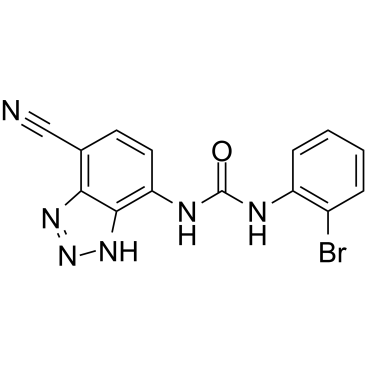| 结构式 | 名称/CAS号 | 全部文献 |
|---|---|---|
![6,7-二甲氧基-4-[N-(3-溴苯基)氨基]喹唑啉盐酸盐 结构式](https://image.chemsrc.com/caspic/006/183322-45-4.png) |
6,7-二甲氧基-4-[N-(3-溴苯基)氨基]喹唑啉盐酸盐
CAS:183322-45-4 |
|
 |
SB-265610
CAS:211096-49-0 |